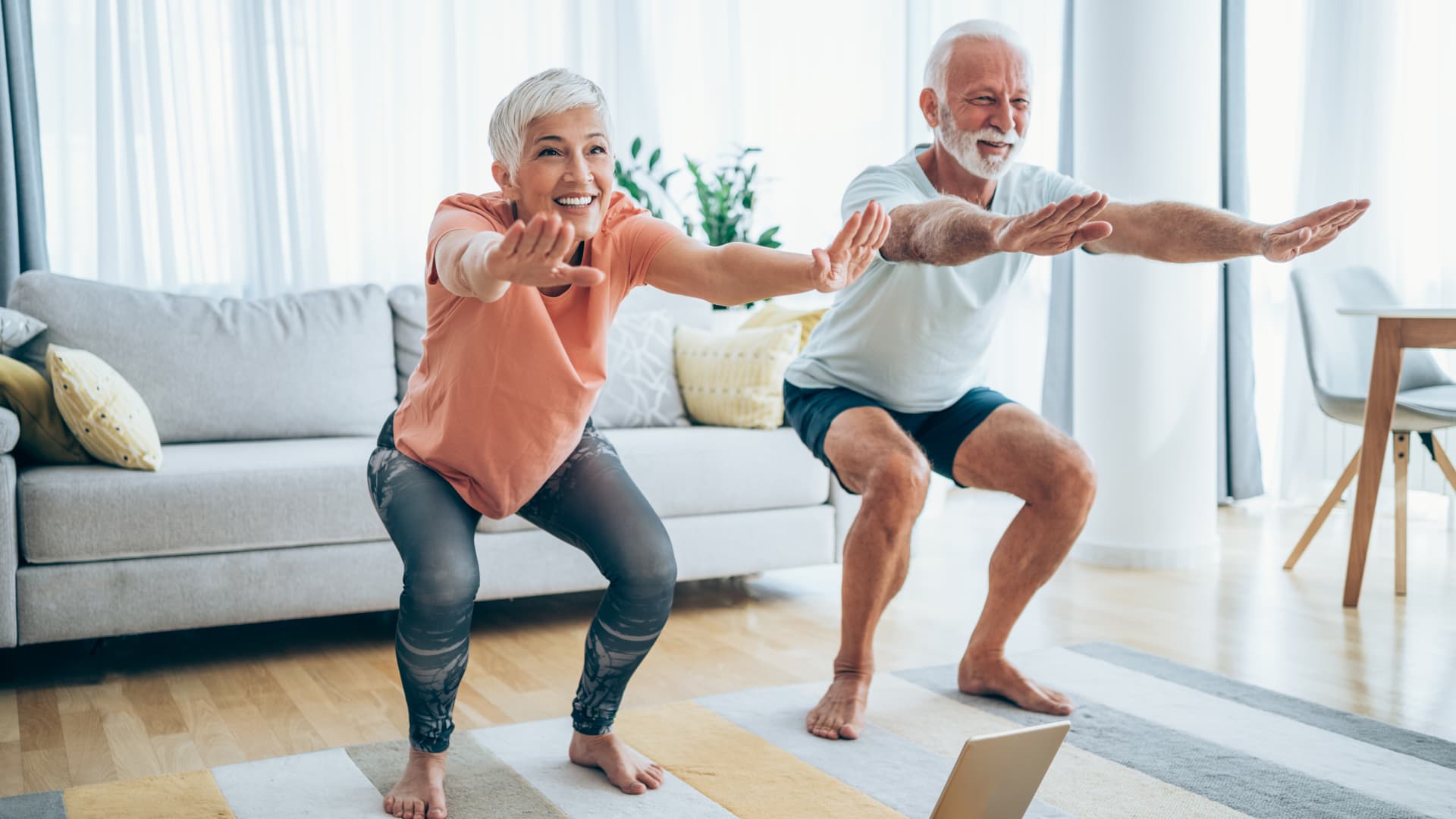This is the best way to structure your workouts for peak health, says longevity researcher
The breakdown of your workout may be more important than its length. Here's the ideal exercise structure for optimal health from a doctor who studies longevity.

Exercise is one of the daily practices that experts recommend for a long and healthy life. And Dr. Peter Attia, a physician who researches longevity, thinks exercise has a greater effect on lifespan than other lifestyle factors like nutrition and sleep.
"Longevity, both through lifespan and healthspan, is impacted more through exercise than any of the other variables we have," said Attia on wellness podcast, "Ten Percent Happier with Dan Harris."
But how often you should work out each week varies, depending on factors like age and time constraints. "You don't have to be exercising 14 to 16 hours per week," if doing so isn't feasible, Attia added.
Still, there is one specific way that people should structure their workouts to achieve optimal health, Attia said, regardless of how much time you have.
The ideal exercise ratio for a long life
50% strength-training
Half of the exercises you do weekly should be strength-training, Attia said on the podcast. This means if you're working out eight hours a week, you should devote four hours to developing your strength and stability.
Strength-training focuses on "increasing muscular strength, endurance, and bone density," according to the Centers for Disease Control and Prevention. It can also be referred to as resistance training, and the exercises can improve your insulin sensitivity and glucose metabolism, the CDC states.
Peopleimages | Istock | Getty Images
Strength-training exercises include:
Weight-liftingPush-upsDeadliftsLungesPlanksBodyweight squatsBurpees50% cardio
The other half of your time should prioritize cardio exercises, Attia said in the episode. And for your cardio workouts specifically, 80% of your workout should be low-intensity, and the remaining 20% should be high-intensity, he added.
Low-intensity is when "you can still speak, [but] you just don't want to," he explained. If you can't speak anymore, you've officially entered high-intensity mode.
Nikada | E+ | Getty Images
Cardio, or aerobic, exercise "gets you breathing harder and your heart beating faster," which is very beneficial for cardiovascular health, according to the CDC.
Low-intensity cardio exercises that you can do are:
Speed-walkingRiding a bike at a moderate paceMowing your lawnSwimming laps in a poolHigh-intensity aerobic exercises to try are:
RunningJumping jacksRiding a bike on a hillJumping ropeRemember not to get too wrapped up in how many hours you're exercising each week because even a little bit of exercise is better than none at all, Attia noted on the podcast.
"If you take a person who is doing zero exercise, and you just get them to the point where they're doing three hours a week," he said, "you will still give them a 50% reduction in all-cause mortality."
DON'T MISS: Want to be smarter and more successful with your money, work & life? Sign up for our new newsletter!
Get CNBC's free Warren Buffett Guide to Investing, which distills the billionaire's No. 1 best piece of advice for regular investors, do's and don'ts, and three key investing principles into a clear and simple guidebook.
Japan is home to the world’s longest-living people—here’s the 5-minute exercise they do every single dayLiving longer doesn’t necessarily mean healthier, longevity expert says: 7 ways to extend your best years

 ValVades
ValVades 
































